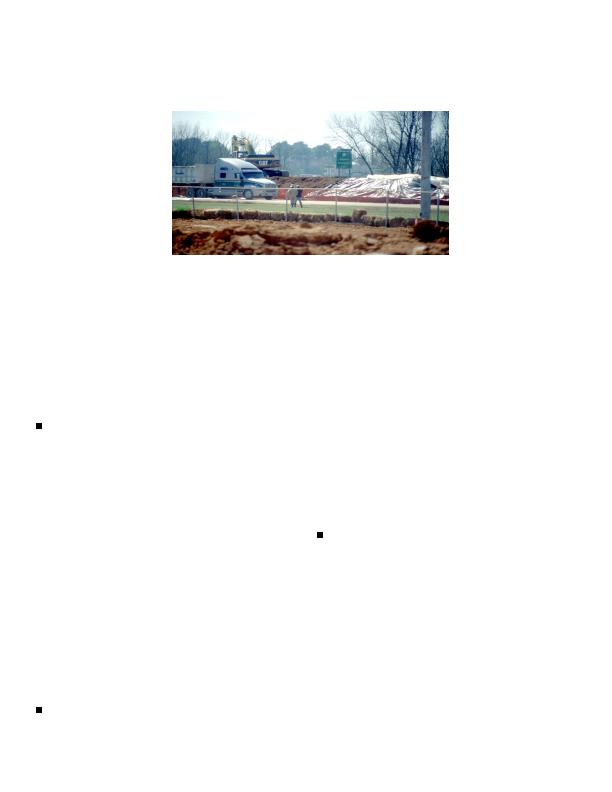
because they live near the Solutia site in Annis-
characterizing childhood blood lead levels, col-
ton. Conclusions for the report are based on blood
activities, makes recommendations, and outlines
and dust and surface soil samples collected from
ongoing activities and future planned activities.
18 families living near the Solutia Inc. facility who
The activities were
volunteered to partici-
conducted by ATSDR,
pate, and are not meant
ADPH, and the
to represent the commu-
Calhoun County
nity at large.
Health Department
The investigation found
(CCHD); the ac-
that 5 of 43 adults had
tivities were aided by
elevated blood PCB
environmental investi-
levels; blood PCB levels
gations conducted by
in 37 children were not
EPA and ADEM.
elevated. Blood PCB
This consultation con-
cluded that evidence
with age and length of
from all four activities
residency near the facil-
shows that the number
ity, but were not corre-
of cases of elevated blood lead levels in Annis-
lated with soil or house dust PCB levels. Available
ton is below both state of Alabama and national
evidence suggests that past PCB exposures may
averages. All four activities found evidence that
have exceeded more recent exposures.
children were exposed to lead. Other conclusions
Health Education and Community Activities
are that area physicians are providing screening
Alabama has been a participant in ATSDR's coop-
services for blood lead, and that increased com-
erative agreement program since 1992. Under this
munication and information sharing will minimize
program, ADPH has received funding and technical
misunderstandings about blood lead levels.
assistance for the development of community educa-
Anniston PCB Air Sampling--A health consulta-
tion and activities associated with human exposure to
tion released for public comment in January 2003
hazardous substances in the environment. The state has
reviews ambient air PCB data collected by EPA
conducted grand rounds presentations and contacted
and Solutia Inc. in Anniston. The consultation
physicians by letter about specific health concerns
concluded that community members living near
related to hazardous waste sites in the state, conducted
the Solutia Inc. facility may be exposed to PCBs
site-specific community education, and developed and
via inhalation; these potential exposures pose an
distributed fact sheets or resource guides.
indeterminate health hazard. Existing ambient air
Anniston--ADPH staff members instigated
PCB data suggest it is possible that current Solutia
the CCHD Protocol for Assessing Community
Inc. workers may be exposed to PCBs while on the
Excellence in Environmental Health (PACE-EH)
Solutia Inc. property. In addition, until the source
activity and participate as ex officio members.
of PCBs is found, potential PCB exposures to
Although the activity is not funded by ATSDR, it
Anniston-area workers involved in soil excavation
is a significant, positive approach to engaging the
activities pose an indeterminate health hazard.
community in addressing its own environmental
An exposure investigation collects information on
health interests.
specific human exposures through biologic sampling,
personal monitoring, related environmental assess-
asked CCHD to define the role ADPH should play
ment, and exposure-dose reconstruction. Following is
in Anniston site issues. ADPH received ATSDR
an example of an exposure investigation in Alabama.
approval to fund a community case manager under
Solutia Inc.--The purpose of the exposure inves-
tigation released in October 2001 was to assess the
2001 the ADPH community case manager has been
level of exposure to PCBs for children and their
fulfilling several roles. These roles are as follows:
families who would most likely have been affected
disseminating available information (health


 Previous Page
Previous Page
